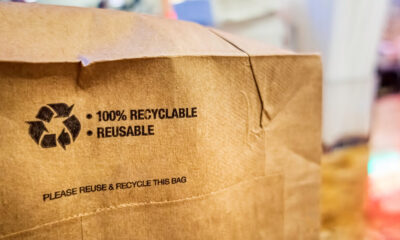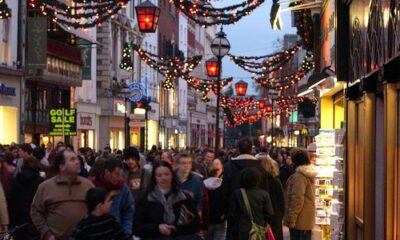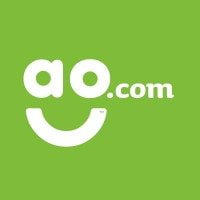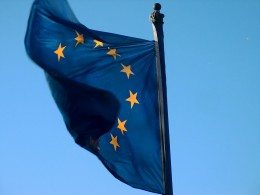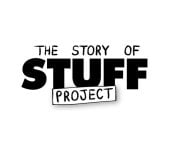

Features
Behind The Story of Stuff
Blue & Green Tomorrow is passionate about reducing the impact that we consumers have on our finite blue and green planet. We are, therefore, delighted to share a two part interview with Annie Leonard on her motivations, and the origins and future of The Story of Stuff Project.
Blue & Green Tomorrow is passionate about reducing the impact that we consumers have on our finite blue and green planet. We are, therefore, delighted to share a two part interview with Annie Leonard on her motivations, and the origins and future of The Story of Stuff Project.
How did the Story of Stuff Project begin?
My interest in how materials flow through the economy started in grade school and crystallised on a spring afternoon on Staten Island.
I grew up in Seattle, at that time a green and luscious city. My family would go camping every summer. This was in the days before DVDs in the back seats of family cars numbed young passengers, so I’d look out the window, studying the landscape, for the whole drive. Each year, I noticed that the stores and strip malls reached a bit further and the forests started a bit later than the previous year. I wondered where all those forests were going. I wondered how I could stop them from going away entirely.
It turned out to be fortuitous that I went to college in New York City, even though at the time it seemed an odd place to go for environmental studies. My college campus was on 116th street and my dorm room was on 110th street. Every morning I would groggily walk those six blocks, staring at the piles of garbage that line NYC’s street’s every dawn. Ten hours later, I’d walk back to my dorm, staring at the empty sidewalks.
I became increasingly intrigued with this microcosm of materials flow. My curiosity got the best of me; I started looking into the trash each morning to see what was in those never-ending piles. It was mostly paper. Paper! That is where my beloved forests were ending up. In the US, 42 percent of industrial wood harvest is used to make paper. And about 40 percent of the stuff in municipal garbage is paper, all of which is recyclable or compostable if it hasn’t been treated with too many toxic chemicals. By simply recycling rather than trashing this paper, we could reduce our garbage by 40 percent, which would also drastically reduce pressure to cut forests and help with climate change.
Once I realised that those morning trash piles were nearly half paper – were once forests – I was determined to find out where they were going. So I took a trip to the infamous Fresh Kills landfill on Staten Island. Coving 4.6 square miles (12 square km), Fresh kills, is one of the largest dumps in the world. When it was officially closed in 2001, some say its volume was greater than that of the Great Wall of China; its peaks 25 meters taller than the Stature of Liberty. I had never seen anything like it. I stood at its edge in absolute awe. As far as I could see in every direction were couches, refrigerators, boxes, apple cores, used clothes… stuff. You know how a gory car crash scene makes us want to turn away and stare at the same time? That is what it was like. I just couldn’t comprehend this massive mountain of materials, reduced to muck, by some system obviously out of control. I knew this was terribly wrong. I didn’t understand it back then, 20 years ago, but I vowed to figure it out.
After college, I went to work for environmental organisations in Washington, D.C. For my first 10 years, I worked on an international campaign to stop rich countries from exporting waste to the world’s poorer countries. I spent a decade traveling around the world, visiting the factories where our stuff is made and the dumps where our stuff is dumped. I met communities that had lost their water supplies, their health, and their livelihood because of polluting industries. I realised that our consumption habits in the US are fueling widespread environmental, health and social problems all over the world. I wanted to find a way to share this information; to expose the hidden costs of our consumption addiction – here and abroad. But I didn’t want to produce yet another scolding guilt-inducing rant. I wanted to say, “Hey, we’ve got a problem here. We’re trashing the planet. We’re trashing each other. And we’re not even having that much fun. Come on, let’s work together and build a different kind of world for us and our children.”
We launched The Story of Stuff free on line in December 2007 and have found that the message resonates with a lot of people. The site has had over 12 million views and the film is being shown in schools, churches, community groups and conferences around the world to raise awareness and inspire discussion on these topics. Simply put, we have got to find another way.
How has the Story of Stuff project developed over the years?
After the first film proved so successful, we received tens of thousands of emails asking for more information about Stuff―for more facts and diagrams and details than we could ever possibly fit into a movie. So I wrote a book. The Story of Stuff book takes readers more deeply into the issues covered in the film, from extraction through consumption and disposal. The book also shares some stories and insights I’ve gathering during over a decade of traveling around the world. I want to bring the hidden impacts of all our production and consumption patterns out into the open. And, like the film, I strive to show the connections between a range of environmental and social issues. Most importantly, I provide plenty of signs of hope and examples of how we could do things differently. The book has been translated into Chinese, Dutch, French, German, Italian, Japanese, Korean, Portuguese and Spanish.
In 2010, we (along with our partners at Free Range Studios) began producing more animated films. Now there are six: The Story of Bottled Water, The Story of Cosmetics, The Story of Electronics, The Story of Cap & Trade, The Story of Citizens United and The Story of Broke. Each of them highlights a different issue, but we’re now digging deeper, beyond the problems of waste and consumerism and into the fundamental principles of a just and sustainable society. The overall theme is to show people how they can move from being consumers to being citizens.
We also developed a high-school curriculum and a faith curriculum for teens (Christian and Jewish versions are currently available and an Islamic and non-denominational version are in the works). This year we launched a monthly audio podcast, The Good Stuff, which focuses on people who are finding solutions to the problems addressed in the films. It’s pretty amazing that we’re able to do all of this with a full-time staff of just five people. We couldn’t do it without our community.
Return to Blue & Green Tomorrow for Part II of this interview tomorrow.


 Environment10 months ago
Environment10 months agoAre Polymer Banknotes: an Eco-Friendly Trend or a Groundswell?

 Environment11 months ago
Environment11 months agoEco-Friendly Home Improvements: Top 7 Upgrades for 2025

 Features9 months ago
Features9 months agoEco-Friendly Cryptocurrencies: Sustainable Investment Choices

 Features10 months ago
Features10 months agoEco-Friendly Crypto Traders Must Find the Right Exchange
